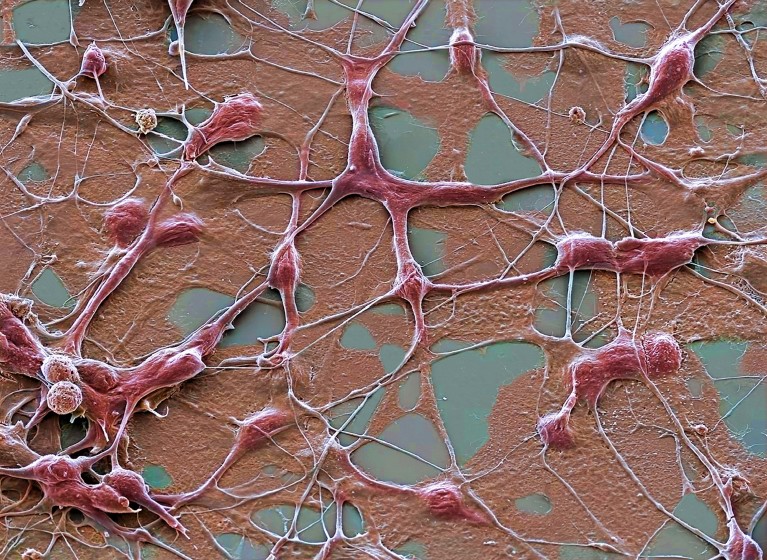
Healthy nerve cells can be transplanted to treat Parkinson’s disease, but they risk rejection by the recipient’s immune system.Credit: Steve Gschmeissner/Science Photo Library
Human brain cells engineered to evade detection by the immune system have successfully restored muscle control in a rat model of Parkinson’s disease1. The study is a step towards the development of a ‘universal’ cell line that can be transplanted into anyone, to cure a raft of diseases without the need for anti-rejection drugs.
“It’s a one-cell-fits-all proposal,” says Clare Parish, a stem-cell biologist at the Florey Institute of Neuroscience and Mental Health in Melbourne, Australia, and a co-author of the study.
The work, published today in Cell Stem Cell, builds on earlier efforts to ‘cloak’ cells from the immune system. Cloaking is a key goal for cell-replacement therapies being tested for conditions ranging from type 2 diabetes and Parkinson’s disease to heart failure and blindness. It would eliminate the need for immunosuppressant drugs, which increase the risk of infection and cancer, and cause tissue damage that ultimately shortens the life of a recipient.
Evasive moves
To help cells to evade the immune system, the researchers created a cell line with eight genes altered to increase their activity so they acted as an immune invisibility cloak. All of the genes have been shown to assist the placenta and cancer cells in naturally evading immune surveillance. For example, mouse embryonic stem cells engineered with the same set of genes were able to evade detection when transplanted into mice2.
Instead of mouse embryonic cells, Parish and her team used human pluripotent stem cells, which can develop into most types of cell found in the body. After being engineered with the cloaking genes, the cells differentiated into nerve cells suitable for treating Parkinson’s disease. The researchers injected the neurons into mice whose immune systems had been replaced with human immune cells, and the neurons were not rejected, suggesting that they were able to evade detection.
To test whether the neurons were functional, the researchers injected them into the brains of rats treated with a neurotoxin whose effects mimic the symptoms of Parkinson’s disease. Twelve weeks after the transplant, the rats’ muscle function had greatly improved.
Roger Barker, a neuroscientist at the University of Cambridge, UK, says the study demonstrates that the cells differentiate and behave normally. It’s “a clever and useful approach of clear importance to the field,” he says.


